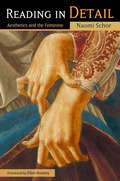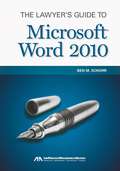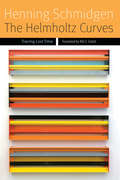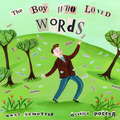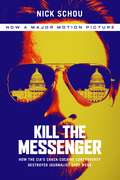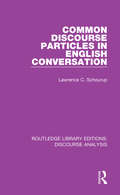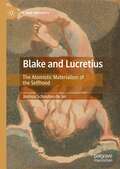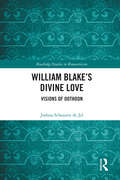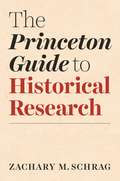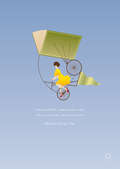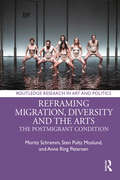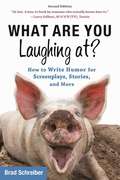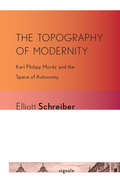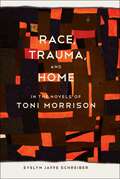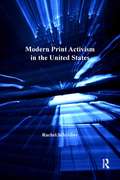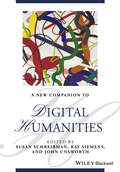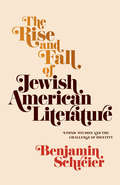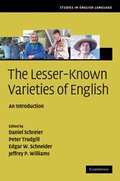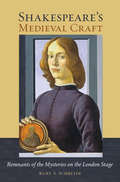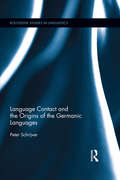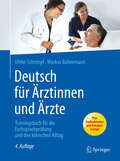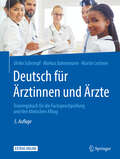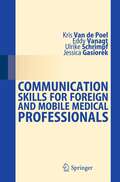- Table View
- List View
Reading in Detail: Aesthetics and the Feminine
by Naomi SchorWho cares about details? As Naomi Schor explains in her highly influential book, we do-but it has not always been so. The interest in detail--in art, in literature, and as an aesthetic category--is the product of the decline of classicism and the rise of realism.But the story of the detail is as political as it is aesthetic. Secularization, the disciplining of society, the rise of consumerism, the invention of the quotidian, have all brought detail to the fore. In this classic work of aesthetic and feminist theory, now available in a new paperback edition, Schor provides ways of thinking about details and ornament in literature, art, and architecture, and uncovering the unspoken but powerful ideologies that attached gender to details. Wide-ranging and richly argued, Reading in Detail presents ideas about reading (and viewing) that will enhance the study of literature and the arts.
The Lawyer's Guide to Microsoft® Word 2010
by Ben M. SchorrThis handy reference includes clear explanations, legal-specific descriptions, and time-saving tips for getting the most out of Microsoft Word®--and customizing it for the needs of today's legal professional. Focusing on the tools and features that are essential for lawyers in their everyday practice, The Lawyer's Guide to Microsoft® Word 2010 explains in detail the key components to help make you more effective, more efficient, and more successful.
The Helmholtz Curves: Tracing Lost Time
by Nils F. Schott Henning SchmidgenThis book reconstructs the emergence of the phenomenon of “lost time” by engaging with two of the most significant time experts of the nineteenth century: the German physiologist Hermann von Helmholtz and the French writer Marcel Proust. Its starting point is the archival discovery of curve images that Helmholtz produced in the context of pathbreaking experiments on the temporality of the nervous system in 1851. With a “frog drawing machine,” Helmholtz established the temporal gap between stimulus and response that has remained a core issue in debates between neuroscientists and philosophers. When naming the recorded phenomena, Helmholtz introduced the term temps perdu, or lost time. Proust had excellent contacts with the biomedical world of late-nineteenth-century Paris, and he was familiar with this term and physiological tracing technologies behind it. Drawing on the machine philosophy of Deleuze, Schmidgen highlights the resemblance between the machinic assemblages and rhizomatic networks within which Helmholtz and Proust pursued their respective projects.
The Boy Who Loved Words
by Roni Schotter Giselle PotterIn this Parents' Choice Gold Award-winning book, Selig collects words, ones that stir his heart (Mama!) and ones that make him laugh (giggle). But what to do with so many luscious words? After helping a poet find the perfect words for his poem (lozenge, lemon, and licorice), he figures it out: His purpose is to spread the word to others. And so he begins to sprinkle, disburse, and broadcast them to people in need.
Kill the Messenger: How the CIA's Crack-Cocaine Controversy Destroyed Journalist Gary Webb
by Nick Schou Introduction by Charles Bowden"Kill the Messenger" tells the story of the tragic death of Gary Webb, the controversial newspaper reporter who committed suicide in December 2004. Webb is the former San Jose Mercury News reporter whose 1996 oDark AllianceOCO series on the so-called CIA-crack cocaine connection created a firestorm of controversy and led to his resignation from the paper amid escalating attacks on his work by the mainstream media. Author and investigative journalist Nick Schou published numerous articles on the controversy and was the only reporter to significantly advance WebbOCOs stories. Drawing on exhaustive research and highly personal interviews with WebbOCOs family, colleagues, supporters and critics, this book argues convincingly that WebbOCOs editors betrayed him, despite mounting evidence that his stories were correct. "Kill the Messenger" examines the oDark AllianceOCO controversy, what it says about the current state of journalism in America, and how it led Webb to ultimately take his own life. WebbOCOs widow, Susan Bell, remains an ardent defender of her ex-husband. By combining her story with a probing examination of the one of the most important media scandals in recent memory, this book provides a gripping view of one of the greatest tragedies in the annals of investigative journalism. "
Common Discourse Particles in English Conversation (RLE: Discourse Analysis)
by Lawrence C. SchourupFirst published in 1985, this book studies several common items in English conversation known variously as ‘discourse particles’, ‘interjections’, ‘discourse markers’, and, more informally, ‘hesitations’ or ‘fillers’. While the analysis primarily focuses on ‘like’, ‘well’ and ‘you know’, the larger concern is the entire set of items of which these are members and as such ‘I mean’, ‘now’, ‘oh’, ‘hey’, and ‘aha’ are also examined. These discourse particles are analysed at length and then a framework is proposed in which their use individually makes sense and allows revealing comparisons to be made between them. This book will be of interest to students of linguistics
Blake and Lucretius: The Atomistic Materialism of the Selfhood (The New Antiquity)
by Joshua Schouten de JelThis book demonstrates the way in which William Blake aligned his idiosyncratic concept of the Selfhood – the lens through which the despiritualised subject beholds the material world – with the atomistic materialism of the Epicurean school as it was transmitted through the first-century BC Roman poet and philosopher Lucretius’ De Rerum Natura. By addressing this philosophical debt, this study sets out a threefold re-evaluation of Blake’s work: to clarify the classical stream of Blake’s philosophical heritage through Lucretius; to return Blake to his historical moment, a thirty-year period from 1790 to 1820 which has been described as the second Lucretian moment in England; and to employ a new exegetical model for understanding the phenomenological parameters and epistemological frameworks of Blake’s mythopoeia. Accordingly, it is revealed that Blake was not only aware of classical atomistic cosmogony and sense-based epistemology but that he systematically mapped postlapsarian existence onto an Epicurean framework.
William Blake’s Divine Love: Visions of Oothoon (Routledge Studies in Romanticism)
by Joshua Schouten de JelDespite the fact that William Blake summarises the plot of Visions of the Daughters of Albion (1793) in just eight lines in the prefatory ‘Argument,’ there are several contentious moments in the poem which continue to cause debate. Critics read Oothoon’s call to Theotormon’s eagles and her offer to catch girls of silver and gold as either evidence of her rape-damaged psyche or confirmation of her selfless love which transcends her socio-sexual state. How do we reconcile the attack of Theotormon’s eagles and the wanton play of the girls with Oothoon’s articulate and highly sophisticated expressions of spiritual truth and free love?In William Blake’s Divine Love: Visions of Oothoon, Joshua Schouten de Jel explores the hermeneutical possibilities of Oothoon’s self-annihilation and the epistemological potential of her visual copulation by establishing an artistic and hagiographical heritage which informs the pictorial representation and poetic pronunciation of Oothoon’s enlightened entelechy. Working with Michelangelo’s The Punishment of Tityus (1532) and Gian Lorenzo Bernini’s Ecstasy of Saint Teresa (1647–51), Oothoon’s ecstatic figuration reflects two iconographic traditions which, framed by the linguistic tropes of divine love expressed within a female-centred mystagogy, reveal the soteriological significance of Oothoon’s willing self-sacrifice.
The Princeton Guide to Historical Research (Skills for Scholars)
by Zachary SchragThe essential handbook for doing historical research in the twenty-first centuryThe Princeton Guide to Historical Research provides students, scholars, and professionals with the skills they need to practice the historian's craft in the digital age, while never losing sight of the fundamental values and techniques that have defined historical scholarship for centuries.Zachary Schrag begins by explaining how to ask good questions and then guides readers step-by-step through all phases of historical research, from narrowing a topic and locating sources to taking notes, crafting a narrative, and connecting one's work to existing scholarship. He shows how researchers extract knowledge from the widest range of sources, such as government documents, newspapers, unpublished manuscripts, images, interviews, and datasets. He demonstrates how to use archives and libraries, read sources critically, present claims supported by evidence, tell compelling stories, and much more.Featuring a wealth of examples that illustrate the methods used by seasoned experts, The Princeton Guide to Historical Research reveals that, however varied the subject matter and sources, historians share basic tools in the quest to understand people and the choices they made.Offers practical step-by-step guidance on how to do historical research, taking readers from initial questions to final publicationConnects new digital technologies to the traditional skills of the historianDraws on hundreds of examples from a broad range of historical topics and approachesShares tips for researchers at every skill level
Philosophy, Dreaming and the Literary Imagination
by Michaela Schrage-FrühThis book explores the intersections between dreaming and the literary imagination, in light of the findings of recent neurocognitive and empirical research, with the aim to lay a groundwork for an empirically informed aesthetics of dreaming. Drawing on perspectives from literary theory, philosophy of mind and dream research, this study investigates dreaming in relation to creativity and waking states of imagination such as writing and reading stories. Exploring the similarities and differences between the 'language' of dreams and the language of literature, it analyses the strategies employed by writers to create a sense of dream in literary fiction as well as the genres most conducive to this endeavour. The book closes with three case studies focusing on texts by Kazuo Ishiguro, Clare Boylan and John Banville to illustrate the diverse ways in which writers achieve to 'translate' the experience and 'language' of the dream.
Atonement and Self-Sacrifice in Nineteenth-Century Narrative
by Jan-Melissa SchrammJan-Melissa Schramm explores the conflicted attitude of the Victorian novel to sacrifice, and the act of substitution on which it depends. The Christian idea of redemption celebrated the suffering of the innocent: to embrace a life of metaphorical self-sacrifice was to follow in the footsteps of Christ's literal Passion. Moreover, the ethical agenda of fiction relied on the expansion of sympathy which imaginative substitution was seen to encourage. But Victorian criminal law sought to calibrate punishment and culpability as it repudiated archaic models of sacrifice that scapegoated the innocent. The tension between these models is registered creatively in the fiction of novelists such as Dickens, Gaskell and Eliot, at a time when acts of Chartist protest, national sacrifices made during the Crimean War, and the extension of the franchise combined to call into question what it means for one man to 'stand for', and perhaps even 'die for', another.
Reframing Migration, Diversity and the Arts: The Postmigrant Condition (Routledge Research in Art and Politics)
by Moritz Schramm Sten Pultz Moslund Anne Ring Petersen Mirjam Gebauer Hans Christian Post Sabrina Vitting-Seerup Frauke WiegandThis book offers a compelling study of contemporary developments in European migration studies and the representation of migration in the arts and cultural institutions. It introduces scholars and students to the new concept of ‘postmigration’, offering a review of the origin of the concept (in Berlin) and how it has taken on a variety of meanings and works in different ways within different national, cultural and disciplinary contexts. The authors explore postmigrant theory in relation to the visual arts, theater, film and literature as well as the representation of migration and cultural diversity in cultural institutions, offering case studies of postmigrant analyses of contemporary works of art from Europe (mainly Denmark, Germany and Great Britain).
What Are You Laughing At?: How to Write Humor for Screenplays, Stories, and More
by Brad Schreiber Chris Vogler“People have forgotten how to be funny,” says Chris Vogler in his foreword to What Are You Laughing at? Luckily, experienced and award-winning humor writer Brad Schreiber is here to remind us all how it’s done. If laughter is the best medicine, be prepared to feel fit as a fiddle after perusing these pages. Brad’s clever wit and well-timed punch lines are sure to leave you grasping your sides, while his wise advice will ensure that you’re able to follow in his comedic footsteps.With more than seventy excerpts from such expert prose and screenwriters as Woody Allen, Steve Martin, and Kurt Vonnegut Jr., as well as unique writing exercises for all situations, this comprehensive tutorial will teach you how to write humor prose for any literary form, including screenwriting, story writing, theater, television, and audio/radio. Additionally, readers are given sage advice on different tactics for writing comedic fiction versus comedic nonfiction. Some of the topics discussed include:Life experience versus imaginationHow to use humor to develop theme/setting, character, and dialogueRhythm and sound of wordsVulgarity and bad tasteHow to market your humor prose in the digital marketThoroughly revised and updated, and with new information on writing short, humorous films, What Are You Laughing at? is your endless source to learning the art of comedy.
The Topography Of Modernity
by Elliott SchreiberKarl Philipp Moritz (d. 1793) was one of the most innovative writers of the late Enlightenment in Germany. A novelist, travel writer, editor, and teacher he is probably best known today for his autobiographical novel Anton Reiser (1785-90) and for his treatises on aesthetics, foremost among them Über die bildende Nachahmung des Schönen (On the Formative Imitation of the Beautiful), published in 1788. In this treatise, Moritz develops the concept of aesthetic autonomy, which became widely known after Goethe included a lengthy excerpt of it in his own Italian Journey (1816-17). It was one of the foundational texts of Weimar classicism, and it became pivotal for the development of early Romanticism. In The Topography of Modernity, Elliott Schreiber gives Moritz the credit he deserves as an important thinker beyond his contributions to aesthetic theory. Indeed, he sees Moritz as an incisive early observer and theorist of modernity. Considering a wide range of Moritz's work including his novels, his writings on mythology, prosody, and pedagogy, and his political philosophy and psychology, Schreiber shows how Moritz's thinking developed in response to the intellectual climate of the Enlightenment and paved the way for later social theorists to conceive of modern society as differentiated into multiple, competing value spheres.
Race, Trauma, and Home in the Novels of Toni Morrison (Southern Literary Studies)
by Evelyn Jaffe SchreiberIn this first interdisciplinary study of all nine of Nobel Laureate Toni Morrison's novels, Evelyn Jaffe Schreiber investigates how the communal and personal trauma of slavery embedded in the bodies and minds of its victims lives on through successive generations of African Americans. Approaching trauma from several cutting-edge theoretical perspectives -- psychoanalytic, neurobiological, and cultural and social theories -- Schreiber analyzes the lasting effects of slavery as depicted in Morrison's work and considers the almost insurmountable task of recovering from trauma to gain subjectivity. With an innovative application of neuroscience to literary criticism, Schreiber explains how trauma, whether initiated by physical abuse, dehumanization, discrimination, exclusion, or abandonment, becomes embedded in both psychic and bodily circuits. Slavery and its legacy of cultural rejection create trauma on individual, familial, and community levels, and parents unwittingly transmit their trauma to their children through repetition of their bodily stored experiences. Concepts of "home" -- whether a physical place, community, or relationship -- are reconstructed through memory to provide a positive self and serve as a healing space for Morrison's characters. Remembering and retelling trauma within a supportive community enables trauma victims to move forward and attain a meaningful subjectivity and selfhood.Through careful analysis of each novel, Schreiber traces the success or failure of Morrison's characters to build or rebuild a cohesive self, starting with slavery and the initial postslavery generation, and continuing through the twentieth century, with a special focus on the effects of inherited trauma on children. When characters attempt to escape trauma through physical relocation, or to project their pain onto others through aggressive behavior or scapegoating, the development of selfhood falters. Only when trauma is confronted through verbalization and challenged with reparative images of home, can memories of a positive self overcome the pain of past experiences and cultural rejection.While the cultural trauma of slavery can never truly disappear, Schreiber argues that memories that reconstruct a positive self, whether created by people, relationships, a physical place, or a concept, help Morrison's characters to establish subjectivity. A groundbreaking interdisciplinary work, Schreiber's book unites psychoanalytic, neurobiological, and social theories into a full and richly textured analysis of trauma and the possibility of healing in Morrison's novels.
Modern Print Activism in the United States
by Rachel SchreiberThe explosion of print culture that occurred in the United States at the turn of the twentieth century activated the widespread use of print media to promote social and political activism. Exploring this phenomenon, the essays in Modern Print Activism in the United States focus on specific groups, individuals, and causes that relied on print as a vehicle for activism. They also take up the variety of print forms in which calls for activism have appeared, including fiction, editorials, letters to the editor, graphic satire, and non-periodical media such as pamphlets and calendars. As the contributors show, activists have used print media in a range of ways, not only in expected applications such as calls for boycotts and protests, but also for less expected aims such as the creation of networks among readers and to the legitimization of their causes. At a time when the golden age of print appears to be ending, Modern Print Activism in the United States argues that print activism should be studied as a specifically modernist phenomenon and poses questions related to the efficacy of print as a vehicle for social and political change.
A New Companion to Digital Humanities (Blackwell Companions to Literature and Culture)
by Susan Schreibman Ray Siemens John UnsworthThis highly-anticipated volume has been extensively revised to reflect changes in technology, digital humanities methods and practices, and institutional culture surrounding the valuation and publication of digital scholarship. A fully revised edition of a celebrated reference work, offering the most comprehensive and up-to-date collection of research currently available in this rapidly evolving discipline Includes new articles addressing topical and provocative issues and ideas such as retro computing, desktop fabrication, gender dynamics, and globalization Brings together a global team of authors who are pioneers of innovative research in the digital humanities Accessibly structured into five sections exploring infrastructures, creation, analysis, dissemination, and the future of digital humanities Surveys the past, present, and future of the field, offering essential research for anyone interested in better understanding the theory, methods, and application of the digital humanities
The Rise and Fall of Jewish American Literature: Ethnic Studies and the Challenge of Identity (Jewish Culture and Contexts)
by Benjamin SchreierBenjamin Schreier argues that Jewish American literature's dominant cliché of "breakthrough"—that is, the irruption into the heart of the American cultural scene during the 1950s of Jewish American writers like Bernard Malamud, Philip Roth, Saul Bellow, and Grace Paley—must also be seen as the critically originary moment of Jewish American literary study. According to Schreier, this is the primal scene of the Jewish American literary field, the point that the field cannot avoid repeating and replaying in instantiating itself as the more or less formalized academic study of Jewish American literature. More than sixty years later, the field's legibility, the very condition of its possibility, remains overwhelmingly grounded in a reliance on this single ethnological narrative.In a polemic against what he sees as the unexamined foundations and stagnant state of the field, Schreier interrogates a series of professionally powerful assumptions about Jewish American literary history—how they came into being and how they hardened into cliché. He offers a critical genealogy of breakthrough and other narratives through which Jewish Studies has asserted its compelling self-evidence, not simply under the banner of the historical realities Jewish Studies claims to represent but more fundamentally for the intellectual and institutional structures through which it produces these representations. He shows how a historicist scholarly narrative quickly consolidated and became hegemonic, in part because of its double articulation of a particular American subject and of a transnational historiography that categorically identified that subject as Jewish. The ethnological grounding of the Jewish American literary field is no longer tenable, Schreier asserts, in an argument with broad implications for the reconceptualization of Jewish and other identity-based ethnic studies.
English as a Contact Language
by Daniel Schreier Marianne HundtRecent developments in contact linguistics suggest considerable overlap of branches such as historical linguistics, variationist sociolinguistics, pidgin/creole linguistics, language acquisition, etc. This book highlights the complexity of contact-induced language change throughout the history of English by bringing together cutting-edge research from these fields. Special focus is on recent debates surrounding substratal influence in earlier forms of English (particularly Celtic influence in Old English), on language shift processes (the formation of Irish and overseas varieties) but also on dialects in contact, the contact origins of Standard English, the notion of new epicentres in World English, the role of children and adults in language change as well as transfer and language learning. With contributions from leading experts, the book offers fresh and exciting perspectives for research and is at the same time an up-to-date overview of the state of the art in the respective fields.
The Lesser-Known Varieties of English
by Daniel Schreier Peter Trudgill Edgar W. Schneider Jeffrey P. WilliamsThis is the first ever volume to compile sociolinguistic and historical information on lesser-known, and relatively ignored, native varieties of English around the world. Exploring areas as diverse as the Pacific, South America, the South Atlantic and West Africa, it shows how these varieties are as much part of the big picture as major varieties and that their analysis is essential for addressing some truly important issues in linguistic theory, such as dialect obsolescence and death, language birth, dialect typology and genetic classification, patterns of diffusion and transplantation and contact-induced language change. It also shows how close interwoven fields such as social history, contact linguistics and variationist sociolinguistics are in accounting for their formation and maintenance, providing a thorough description of the lesser-known varieties of English and their relevance for language spread and change.
Shakespeare’s Medieval Craft: Remnants of the Mysteries on the London Stage
by Kurt A. SchreyerIn Shakespeare's Medieval Craft, Kurt A. Schreyer explores the relationship between Shakespeare’s plays and a tradition of late medieval English biblical drama known as mystery plays. Scholars of English theater have long debated Shakespeare’s connection to the mystery play tradition, but Schreyer provides new perspective on the subject by focusing on the Chester Banns, a sixteenth-century proclamation announcing the annual performance of that city’s cycle of mystery plays. Through close study of the Banns, Schreyer demonstrates the central importance of medieval stage objects—as vital and direct agents and not merely as precursors—to the Shakespearean stage. As Schreyer shows, the Chester Banns serve as a paradigm for how Shakespeare’s theater might have reflected on and incorporated the mystery play tradition, yet distinguished itself from it. For instance, he demonstrates that certain material features of Shakespeare’s stage—including the ass’s head of A Midsummer Night’s Dream, the theatrical space of Purgatory in Hamlet, and the knocking at the gate in the Porter scene of Macbeth—were in fact remnants of the earlier mysteries transformed to meet the exigencies of the commercial London playhouses. Schreyer argues that the ongoing agency of supposedly superseded theatrical objects and practices reveal how the mystery plays shaped dramatic production long after their demise. At the same time, these medieval traditions help to reposition Shakespeare as more than a writer of plays; he was a play-wright, a dramatic artisan who forged new theatrical works by fitting poetry to the material remnants of an older dramatic tradition.
Language Contact and the Origins of the Germanic Languages (Routledge Studies in Linguistics #13)
by Peter SchrijverHistory, archaeology, and human evolutionary genetics provide us with an increasingly detailed view of the origins and development of the peoples that live in Northwestern Europe. This book aims to restore the key position of historical linguistics in this debate by treating the history of the Germanic languages as a history of its speakers. It focuses on the role that language contact has played in creating the Germanic languages, between the first millennium BC and the crucially important early medieval period. Chapters on the origins of English, German, Dutch, and the Germanic language family as a whole illustrate how the history of the sounds of these languages provide a key that unlocks the secret of their genesis: speakers of Latin, Celtic and Balto-Finnic switched to speaking Germanic and in the process introduced a 'foreign accent' that caught on and spread at the expense of types of Germanic that were not affected by foreign influence. The book is aimed at linguists, historians, archaeologists and anyone who is interested in what languages can tell us about the origins of their speakers.
Deutsch für Ärztinnen und Ärzte
by Ulrike Schrimpf Markus BahnemannDieses Buch ist ein Kommunikationstrainer, mit dem Sie sich als ausländische Ärztin bzw. Arzt optimal auf Ihre praktische Tätigkeit in Deutschland und auf die geforderte Fachsprachprüfung vorbereiten können:Übungsaufgaben und Fallbeispiele bereiten auf Situationen im Klinikalltag vorAudio-Dateien zum Download mit Beispieldialogen trainieren Hörverständnis und AusspracheOnlinebasierter Vokabeltrainer hilft beim gezielten Lernen von FachbegriffenEntwickelt von der Charité International Academy Berlin, bewährt seit 3 Auflagen - einsetzbar für alle Sprachlevel ab B1.
Deutsch für Ärztinnen und Ärzte: Trainingsbuch für die Fachsprachprüfung und den klinischen Alltag
by Ulrike Schrimpf Markus Bahnemann Martin LechnerAls Arzt aus dem Ausland können Sie sich mit diesem Buch optimal auf die praktische Tätigkeit und die Fachsprachprüfung in Deutschland vorbereiten. Hintergrundwissen zum deutschen Gesundheitssystem und gezieltes Sprachtraining helfen Ihnen dabei: Aufgaben und Fallbeispiele zum Üben der Anamnese, klinischen Untersuchung, Patientenvorstellung, Aufklärung und Therapie, ärztlicher DokumentationAudio-Dateien zum Download mit Beispieldialogen trainieren Hörverständnis und AusspracheOnlinebasierter Vokabeltrainer hilft beim gezielten Lernen von FachbegriffenGrundvokabular mit englischen Übersetzungen zum Nachschlagen und erweitertes Vokabular für die wichtigsten ErkrankungenExtra: Großes Format zum effektiven Lernen und Üben.Entwickelt von der Charité International Academy Berlin, bewährt seit 4 Auflagen und einsetzbar für alle Sprachlevel ab B1. Die 5. Auflage wurde komplett gesichtet, überarbeitet und aktualisiert.
Communication Skills for Foreign and Mobile Medical Professionals
by Ulrike Schrimpf Eddy Vanagt Jessica Gasiorek Kris Van PoelAround the world, the number of internationally mobile medical professionals is steadily increasing, posing potential difficulties for the good communication with patients and colleagues that is vital to satisfactory outcomes and personal professional success. Communication Skills for Foreign and Mobile Medical Professionals is an evidence-based communication resource book designed for all medical professionals who work in foreign countries, cultures, and languages. It offers a wealth of insights into doctor-patient communication, structured around the different phases of the consultation. The proposed strategies and tips will raise the reader's awareness of important recurring issues in face-to-face interactions and improve his or her ability to deal with them effectively. Common misunderstandings between doctors and patients with a different cultural/linguistic background are discussed in depth. Throughout, the emphasis is on patient-oriented medicine. The modular structure of the book will ensure quick and easy retrieval of information. Communication Skills for Foreign and Mobile Medical Professionals will be of benefit to a wide range of medical professionals, from senior nursing staff through to heads of department, in multilingual or intercultural contexts. It will also be of value to human resource managers, language trainers, and cultural mediators.
